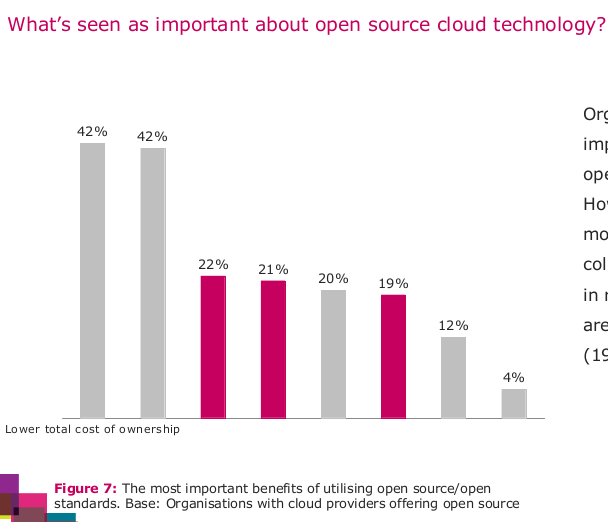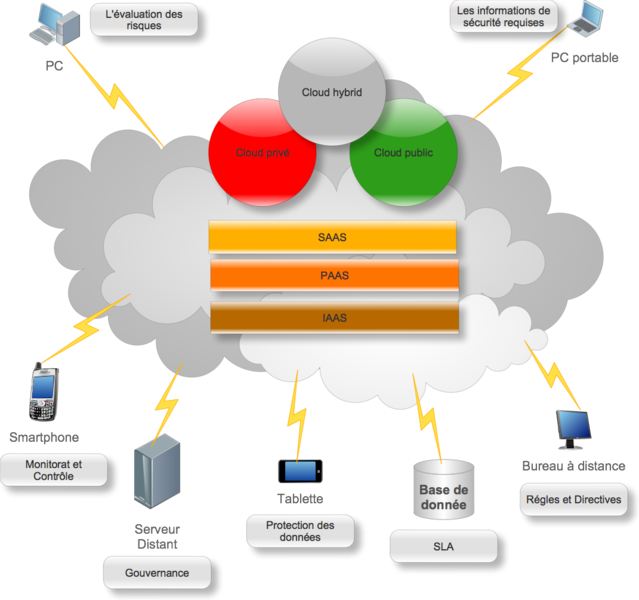There may be considerable debate over what, exactly, constitutes an “open cloud,” but open source software is frequently considered an important part of it.
Cost, customizability, transparency and collaborative development are all among the benefits typically attributed to the use of such software in the cloud, and recently hosting provider Rackspace suggested another one: innovation.
“Using open source cloud technology boosts innovation,” the company’s UK division wrote in its announcement of the results of a new research study last month.
Usage on the Rise
As part of Rackspace’s study, research firm Vanson Bourne last fall surveyed 250 IT managers from 250 UK organizations that outsource IT services. What it found was that a full 74 percent of the companies using open source cloud technology said that it makes them more innovative.
Cost efficiency, vendor neutrality and scalability were cited as the main benefits of open source software that help drive this innovation.
 Benefits of open source cloud technologies (Rackspace)
Benefits of open source cloud technologies (Rackspace)
No wonder, then, that a full 56 percent of those using an open source cloud said their usage is increasing, with a particularly strong trend in that direction among the retail and financial services sectors.
‘Accelerated Time to Market’
For Andy Knosp, vice president of product at open cloud platform provider Eucalyptus, Rackspace’s findings weren’t surprising.
“One of the primary benefits that Eucalyptus customers realize from open cloud is that of agility and being able to respond to business demands more quickly,” Knosp told Linux.com.
“This agility often leads to faster development cycles for applications, accelerated time to market, and ultimately greater innovation within their business,” he added.
Multiple Clouds
Another notable finding from the study was that more than 50 percent of respondents said they already work with two or more cloud providers.
“As the cloud continues to grow in importance, multiple clouds will become increasingly commonplace,” said Rackspace CTO John Engates. “It is therefore vital that applications deployed in different clouds can ‘talk’ to each other and those of partners and customers. Open source platforms provide the easiest way of enabling this collaboration.

“By choosing an open cloud solution, businesses avoid being locked-in to one technology and gain the freedom to move their data and applications between, public, private and hybrid cloud models as required,” Engates added.
‘More Cost-Effective’
“It follows that being able to modify your cloud management platform allows you to be more innovative,” Sam Johnston, president of the Open Cloud Initiative, told Linux.com. “Removing the licensing component from your budget can also be more cost-effective, provided you don’t have to invest more time to make it all work.
“However, were there common, open formats and interfaces between OpenStack and a proprietary cloud stack, then many of the same freedoms (freedom from vendor lock-in, in particular) would be adequately protected,” added Johnston, whose nonprofit advocacy group has outlined a list of Open Cloud Principles.
In any case, there’s no doubt that open source software is a core component of cloud computing, Jay Lyman, a senior analyst with 451 Research, told Linux.com.
‘Performance and Innovation’
“Enterprises, service providers and others have embraced open source software to more effectively leverage cloud computing resources alongside their existing hardware and data centers and also to empower their software developers and system administrators,” Lyman explained. “Today, rather than question open source software, these large enterprises and service providers tend to expect open source software and support it, particularly when it comes to the cloud.”
Cost is always a factor, of course, but “the main drivers for open source tend to be speed and availability, support and growth of developer communities, flexibility and — increasingly — performance and innovation,” Lyman pointed out.
“By supporting open source software and people who can effectively leverage it, organizations can also better prepare themselves for adjacent and emerging trends such as cloud computing, mobility, DevOps and polyglot programming,” he concluded.
Image Credit
Cloud computing map courtesy Wikimedia Commons , Creative CommonsAttribution-Share Alike 3.0 Unported



